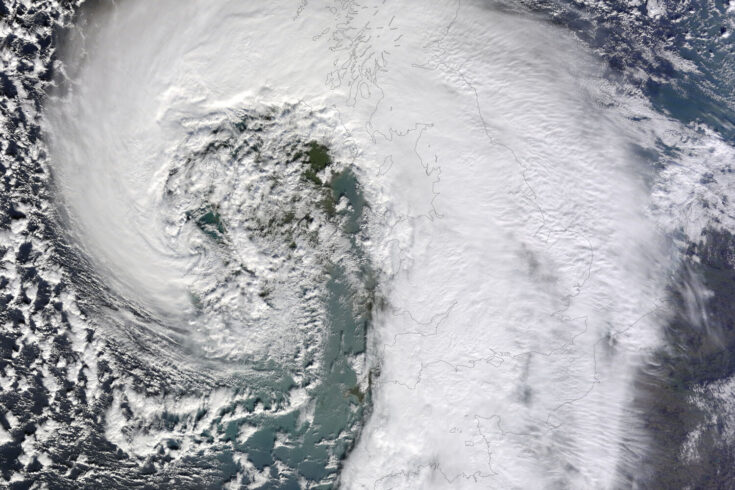Researchers at the Supergen Energy Networks Hub have discovered that in most cases there are connections between each type of fault and a set of relevant weather patterns. The hub is funded by the Engineering and Physical Sciences Research Council (EPSRC).
Winter weather patterns
The study, published in Nature, shows that winter weather patterns characterised by high wind speeds and high precipitation volumes are responsible for many instances of power outages through wind, gale and lightning strikes. They also discovered weather patterns with moderate to high snowfall are often linked to power outages caused by snow and ice.
The high-risk weather patterns identified in their work has been shown to have good levels of predictability with valuable lead time, up to several weeks in advance. These clear links between specific weather patterns or pattern transitions and power outages could significantly improve the preparedness of the UK and broader European distribution network operators for adverse weather conditions.
These connections were made using a large dataset for England, Scotland and Wales, and two smaller complementary datasets representing southern Scotland and north-east England.
Predicting and preparing for power outages
Dr Laiz Souto, lead author of the study from the University of Bristol explained:
It is well known that different weather phenomena, such as lightning strikes, wind and gale, snow and ice, are common causes of power system failures, and their frequency of occurrence varies depending on weather conditions and seasons.
However, none of these efforts considered that the occurrence of different types of weather-induced power system failures is related to specific large-scale atmospheric circulation types, which we refer to here as weather patterns.
For the first time, we looked at the relationships between these weather patterns and power system failures with the objective of identifying relevant trends to predict and prepare for power outages.
Identifying high risk weather patterns
The team extended the application of an existing set of 30 Met Office daily weather pattern definitions to the electricity infrastructure.
They analysed the occurrence of 30 pre-defined daily weather patterns along with nearly 70,000 power system failures in the UK between 2010 and 2019 to investigate the predictability of weather-induced power outages.
They managed to identify high-risk weather patterns associated with power system failures caused by different weather phenomena for all seasons.
Helping operators to be ready for challenging weather
Professor Phil Taylor, co-author of the study and Pro Vice-Chancellor for Research and Enterprise at the University of Bristol, said:
We identified high-risk weather patterns, as well as weather pattern transitions and persistence, likely to cause power outages across seasons in the UK. We identified relevant trends between weather patterns and power system failures caused by different weather phenomena, such as wind and gale, lightning strikes, snow and ice.
Our approach overcomes limitations in the temporal resolution of current practices adopted by distribution network operators and will significantly help operators to be ready for the most challenging weather.
Enhancing our ability to predict and prepare
Dr Lucy Martin, Cross-Council Programmes Deputy Director at EPSRC said:
As one of three Supergen Hubs that EPSRC invests in, it’s great to see this whole systems approach to unlock weather patterns and power system failures to enhance our ability to predict and prepare.
This work will reduce vulnerabilities and minimise the impact of power failures to ensure a resilient and reliable energy infrastructure.

